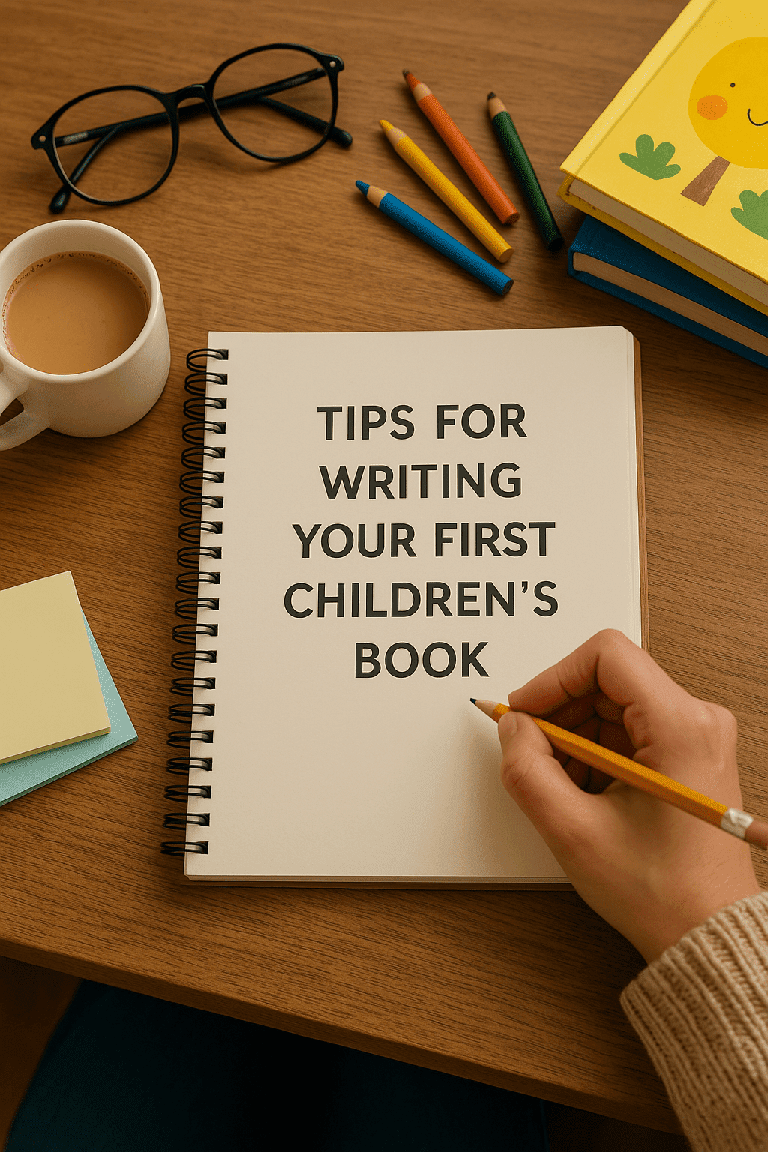Tips for Writing Your First Children’s Book
From someone who’s been right where you are.
So—you’ve got an idea for a children’s book. Maybe it came to you in the middle of the night, or maybe it’s been sitting in the back of your mind for years. Either way, you’re finally ready to start writing. First of all, congratulations! That first step is a big one.
Writing for children is joyful, challenging, and incredibly rewarding. But if you’re just getting started, it can also feel a little overwhelming. Where do you begin? How long should it be? Should it rhyme? Should there be talking animals?
Take a deep breath. You don’t have to figure it all out today. But here are some tips that might help guide you along the way—from one writer to another.
1. Read (a lot of) children’s books
Before you write one, make sure you’re reading them. Head to your local library or bookstore and spend some time in the children’s section. Notice what draws you in.
- What kinds of stories are being told?
- How long are they?
- What kind of language is used?
- How does the text interact with the illustrations?
You’ll start to get a sense of what works—and what doesn’t.
2. Know who you’re writing for
“Children’s books” is a wide category. Are you writing a sweet bedtime story for toddlers? A silly adventure for preschoolers? Something emotional for an older child?
Each age group has different attention spans, vocabulary levels, and emotional needs. Get to know your audience so you can meet them where they are.
3. Keep it simple—but not boring
Writing simply is not the same as writing dully. Kids are sharp. They pick up on rhythm, wordplay, surprise, and emotion. So while your language should be clear and age-appropriate, don’t be afraid to play with sounds, structure, or humor.
And remember: every word counts. Children’s books are usually short, so make every sentence earn its spot.
4. Start with a strong idea
This doesn’t mean your plot has to be complicated. In fact, simple ideas often work best for picture books. What matters is that your idea feels fresh, focused, and true.
Here are a few questions to help shape your story:
- What does your character want?
- What gets in their way?
- How do they change by the end?
And just as importantly: Why will a child care?
5. Let the pictures do some of the talking
If you’re writing a picture book, remember that the illustrations carry just as much storytelling power as the text. You don’t need to describe everything on the page—just focus on what the text needs to convey. Leave space for the illustrator’s creativity.
Even if you plan to illustrate the book yourself, write first with clarity and pacing in mind. You can always tweak things to fit the visuals later.
6. Don’t force a moral
Yes, children’s books often have messages—but they should emerge naturally through the story, not come across like a lecture. Kids can sniff out a “lesson” from a mile away.
Instead of asking “What do I want to teach?” try asking:
“What do I want them to feel?”
A story that sparks wonder, laughter, or empathy is far more powerful than one that simply says, “Be kind.”
7. Read it out loud. Again. And again.
Children’s books are heard as much as they are read. The rhythm, flow, and sound of your words matter. Read your draft out loud. You’ll hear where it stumbles, where it shines, and where it might need trimming.
Bonus tip: If you can read it to a child (or even a very honest adult), do it. Their reactions will tell you more than any writing group.
8. Don’t stress about publishing—yet
It’s easy to get caught up in questions like:
How do I find an agent?
Should I self-publish?
Will anyone want this story?
All of those are valid—but save them for later. First, write the best story you can. The rest comes step by step, and there’s plenty of time to learn along the way.




